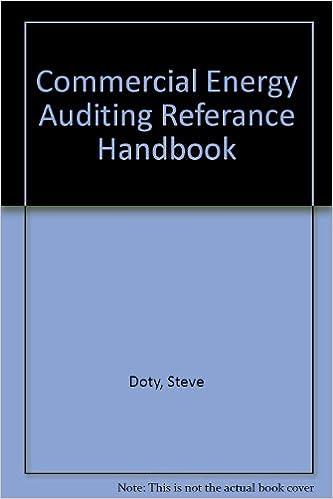Answered step by step
Verified Expert Solution
Question
1 Approved Answer
accounting Numbers-Critical Thinking on Case 5-1 ess of ces and onclusions Jim Casey recently in his accounting degree from State Universit work for a Big


accounting
Numbers-Critical Thinking on Case 5-1 ess of ces and onclusions Jim Casey recently in his accounting degree from State Universit work for a Big Four CPA firm. After he had been with the firm for abou was sent to the Ling Clothing Company to work on the audit. He was not of his knowledge at this early point in his career. He noticed, however, the company's transactions and events were recorded in a way that might be accounting theory and generally accepted accounting principles. versity and we about six months, he as not very confidere ver, that some of the be in violation Wenge the financial ir decisions and the Study each of the following facts to see if the auditors should challenge accounting practices used or the intentions of management. Write your decis reasoning behind your conclusions. This problem can serve as an opportunity to apply accounting theory to situs which you are not yet familiar and as a preview of future chapters. Some of the situations relate to material you have already covered, and some situations rela rial to be covered in future chapters. After each item, we have given an indicati chapter in which that item is discussed. You may research future chapters to find rect answer. Alternatively, you could use your present knowledge of accountine determine whether or not Casey should challenge each of the financial accounting used. Realize, however, that some generally accepted accounting practices were has compromise and seem to differ with accounting theory as described in this chapter ry to situations with we of the following stions relate to wale en an indication of the sto find the cor- of accounting theory to cial accounting practices Ref foll. 1. One of the senior members of management stated the company planned to replace all of the furniture next year. He said that the cash in the Accumulated Depreciation account would be used to pay for the furniture. (Ch. 3) 2. The company held the books open at the end of 2018 so that the company could record some early 2019 sales as 2018 revenue. The justification for this practice was that 2018 was not a good year for profits. (Ch. 3,5,6) 3. The company's buildings were appraised for insurance purposes. The appraised values were $10,000,000 higher than the book value. The accountant debited Buildings and credited Paid-in Capital from Appreciation for the difference. (Ch. 5) 4. The company recorded purchases of merchandise at the list price rather than the gross selling invoice) price. (Ch. 6) 5. Goods shipped to the company from a supplier, FOB destination, were debited to Purchases. The goods were not included in ending inventory because the goods had not yet arrived. (Ch. 5,6) 6. The company counted some items twice in taking the physical inventory at the end of the year. The person taking the inventory said he had forgotten to include some items in last year's physical inventory, and counting some items twice would make up for the items missed last year so that net income this year would be approximately correct. (Ch. 7) 7. The company switched from FIFO to LIFO in accounting for inventories. The preceding year it had switched from the weighted average method to FIFO. Ing reason given for the most recent change was that federal income taxes would be lower. No indication of this switch was to appear in the financial statemen (Ch. 5,7) In te for 1 SEC Poli lowi shoc 8. Because things were pretty hectic at year-end, the accountant made no e reconcile the bank account. His reason was that the bank probably had errors. The bank balance was lower than the book balance, so the acc Miscellaneous Expense and credited Cash for the difference. (Ch. 8) 9. When a customer failed to pay the amount due, the accountant de for Uncollectible Accounts and credited Accounts Receivable accounts written off in this manner was huge. (Ch.9) ountant made no effort to Ik probably had not made any so the accountant debited ccountant debited Allowance Receivable. The amount of ing Information for Decisions and Establishing 10. A completely depreciated machine was still being used. The accountant left the asset and its related accumulated depreciation on the books, stopped recording depreciation on the machine, and did not go back and correct earlier years' net income and reduce accumulated depreciation. (Ch. 10) 11. The accountant stated that even though research and development costs incurred to develop a new product would benefit future periods, these costs must be expensed as incurred. This year, $200,000 of these costs were charged to expense. (Ch. 11) 12. An old truck was traded for a new truck. Because the trade-in value of the old truck was higher than its book value, a gain was recorded on the transaction. (Ch. 11) 13. The company paid for a franchise that gave it the exclusive right to operate in a given geographical area for 60 years. The accountant is amortizing the asset over 60 years. (Ch. 11) 14. The company leases a building and has a nonrenewable lease that expires in 15 years. The company made some improvements to the building. Because the improvements will last 30 years, they are being written off over 30 years. (Ch. 11)Step by Step Solution
There are 3 Steps involved in it
Step: 1

Get Instant Access to Expert-Tailored Solutions
See step-by-step solutions with expert insights and AI powered tools for academic success
Step: 2

Step: 3

Ace Your Homework with AI
Get the answers you need in no time with our AI-driven, step-by-step assistance
Get Started


